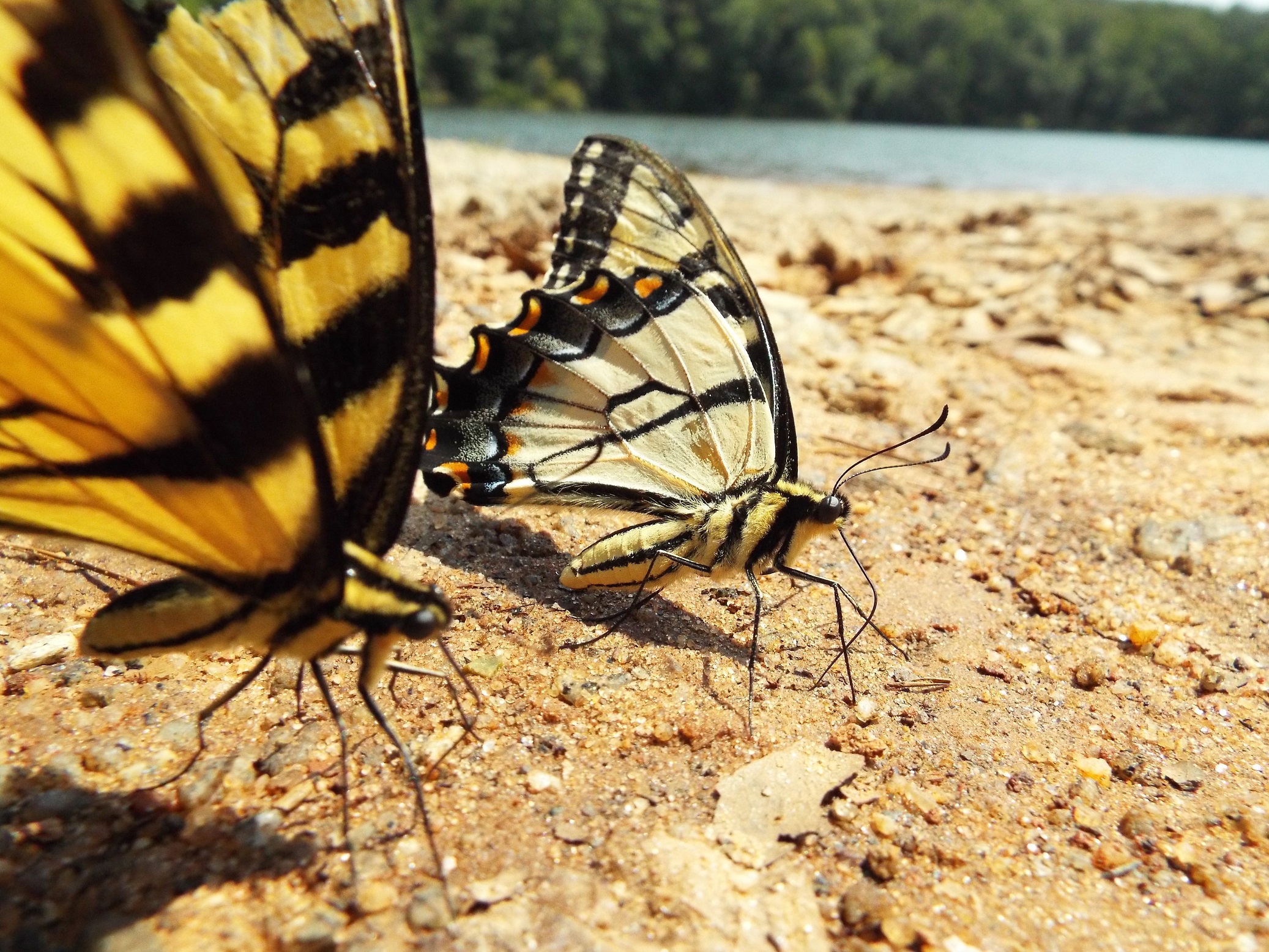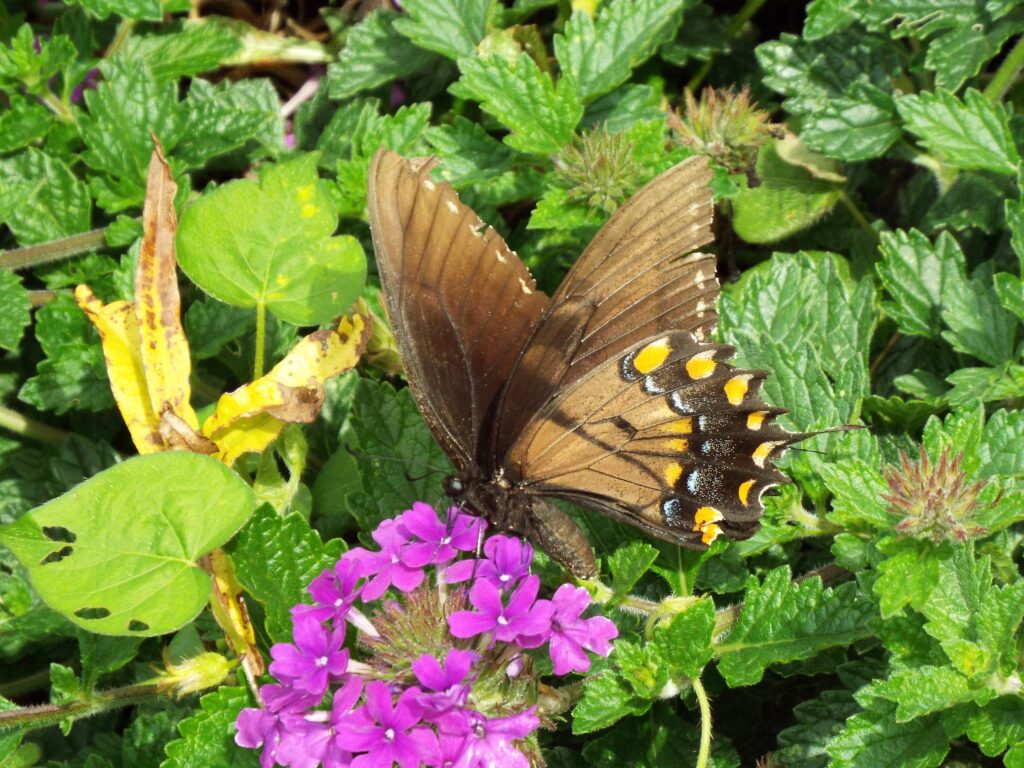




This week for Flora and Fauna Friday, we have one of our most iconic and largest butterflies: the Eastern Tiger Swallowtail (Papilio glaucus).
The Eastern Tiger Swallowtail is a large species of butterfly in the Swallowtail family found throughout the eastern United States and one of our eight species of Swallowtail in South Carolina. I believe it is tied for second place for the largest butterfly in the state with its cryptic cousin the Appalachian Swallowtail but squarely behind the first place Giant Swallowtail. Eastern Tiger Swallowtails are an unmistakable butterfly, except for when they’re not. Most Tiger Swallowtails are a rich yolk-yellow below and above that’s bordered and striped with strokes of charcoal black. Their hindwing fringes features a dash of chromatic diversity, with a splash of iridescent sky-blue and a few flecks of warm-orange. Male and females are quite similar but females tend to flaunt more substantial blue coloration. However, some female Tiger Swallowtails look radically different. Females can also appear as a dark-morph, which throws a wrench in the identification gears. Here in the Lowcountry, dark-morph female Tiger Swallowtails are not that uncommon and show up regularly in certain habitats. Dark-morphs can be quite obvious, showing faint stripes above and below through their graphite wings, or quite difficult, looking very similar to a Spicebush Swallowtail with a solid black body and almost entirely blue hindwings. The best way to identify a dark-morph female is to look for a large size, unmarked abdomen, faint stripes on the underside of the forewing, and a thin dark line running through the middle of the blue of the hindwings.
Eastern Tiger Swallowtails nectar on a wide variety of wildflowers and are a common sight almost anywhere in the Lowcountry. The reason for their abundance is in their host plants. Eastern Tiger Swallowtail caterpillars will host on a wide variety of hardwood tree species including: Black Cherry, Tulip Poplar, Sweet Bay, Ashes, and Willows. One of these tree species can be found in most any wooded habitat in the Lowcountry and so, so can Tiger Swallowtails. The caterpillar of the Eastern Tiger Swallowtail is large, cylindrical, wrinkly, and lime-green with a thin yellow collar and a comically caricatured eyespot, complete with an angry eyebrow. Caterpillars create a hidey-hole out of a leaf to rest in. They do this by weaving a carpet of silk across the surface of a leaf and, as the silk dries, it rolls the leaf up like a taco shell around them. Larger caterpillars leave their tortilla tunnel to feed but return to rest and digest.